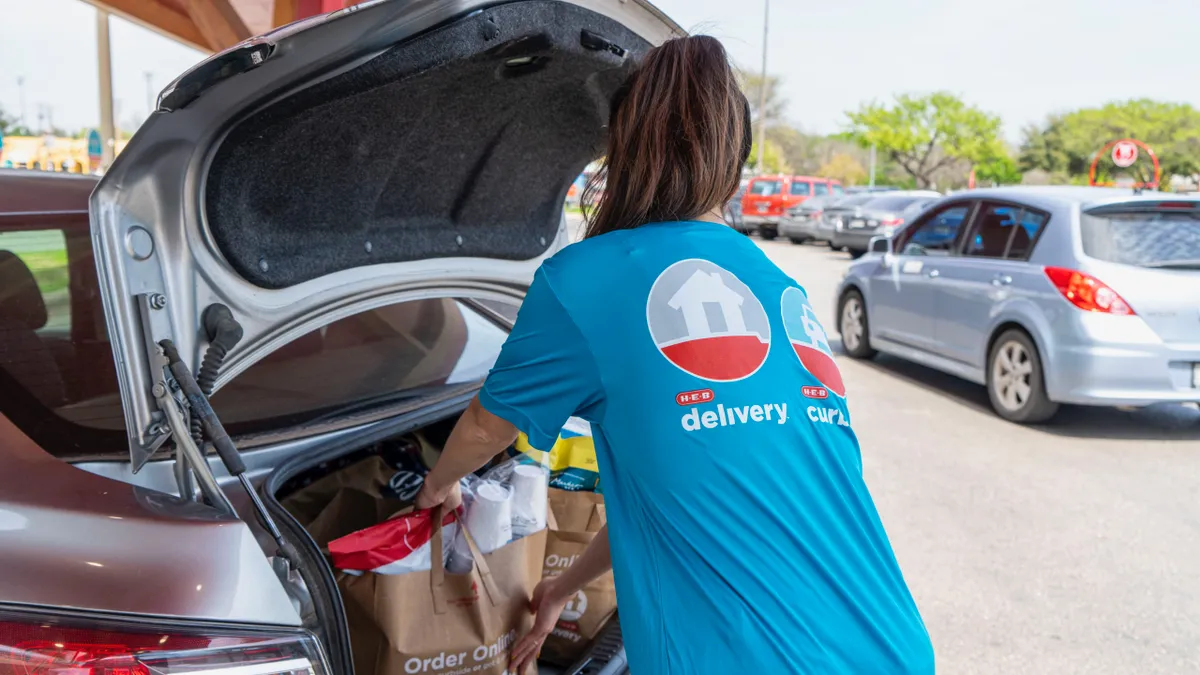Even as the vaccine starts to slow the trajectory of the COVID-19 pandemic, many Americans are still staying at home for the foreseeable future. For recipients of SNAP benefits, that means dealing with ongoing issues around managing shrinking budgets while keeping the whole family fed. Especially as mothers juggle work, childcare, cooking, and remote learning, there is an opportunity in the online retail space to offer SNAP shoppers some relief.
Fresh EBT, mobile app for SNAP recipients to manage their benefits, has seen its user base double since the beginning of the pandemic, going from 2.7 million users per month in March 2020, to 4.5 million by July 2020. This, coupled with the ongoing fears of crowded shopping centers, is opening a widening market for Americans who want to use their EBT benefits online. But nearly 90% of Fresh EBT users have never bought groceries online before. How can retailers tap into this growing market? According to multiple surveys of several hundred Fresh EBT users, online retailers can make things easier by keeping the average SNAP shopper in mind: knowing what they want and offering brands they recognize, being transparent about any delivery fees, and above all—making it clear that SNAP recipients can use their EBT benefits online. Many respondents said they simply did not know they could use EBT online, and several first-time online grocery shoppers were thrilled
The average SNAP shopper needs affordable, kid-friendly food—with no hidden fees
Some 74% of all Fresh EBT users are women, and almost half of them have children under the age of 5. Approximately 72% of women with kids surveyed do not live with a partner, meaning that many of them are homeschooling, dealing with higher utility bills and potentially reduced employment.
SNAP shoppers tend to do a big shop at beginning of the month when the deposit hits and to buy in bulk especially for non-perishable items such as snacks, water, and baby formula, among other basics. They are comparison shoppers, and many won’t buy something simply for the convenience online if they know they can get a better price at their local grocery store.
For many SNAP shoppers, grocery shopping is a family affair—everyone comes along for the trip to help or pick out what they want. Both mothers and their children are looking for recognizable products and brands.
Translating EBT shopping to the online grocery context
Some 88.7% of Fresh EBT users surveyed have never shopped for groceries online, but it’s not because they were uninterested—75% of those surveyed did not know that they could use their EBT card to shop online. After learning that their benefits did translate online, 83.2% said they would use their EBT card to shop online now.
This lack of awareness could be easily solved by small changes on the part of retailers, making payment options clearer upfront. The best online experience for SNAP shoppers will mimic what they look for in a grocery store context, particularly the opportunity to save money on these bulk, monthly purchases.
How online shopping solves pain points for SNAP shoppers
This program is an opportunity to solve common issues for these consumers, such as transportation. Many women surveyed who lived in urban centers did not own cars, and some described having to pay for taxis or ride-sharing services to pick up bulk purchases at grocery stores.
Online grocery shopping allows these shoppers to find better deals and an easier experience for necessary items that they would need to buy either way. Convenience and bulk pricing are the main factors that drive these consumers. The most successful retailers combined cheaper per unit pricing on snacks that SNAP shoppers already buy, saving a trip to the store especially when it came to hauling bulky items.
And the data bears that out: even if the vast majority of those surveyed had never shopped online, after that first experience, they said they were very likely to try again.
How to avoid stumbling blocks
Research found that order minimums, delivery fees, brands shoppers didn’t recognize, and slightly higher prices all deterred potential shoppers from online grocery shopping.
A survey of more than 600 users found that many who explored the online shopping experience and decided not to buy something did so because they thought they could find the same product for a better price at a local store. Vagueness on delivery fees was also a key factor: in a telephone survey, nearly half of the respondents that Fresh EBT interviewed had confusion about delivery pricing when it came to online grocery shopping. Delivery fees or order minimums made up a combined 39% of the users who chose not to grocery shop online.
Success comes from keeping the shopper experience in mind
SNAP online should be designed with a clear understanding of this specific shopper and their experiences in mind to be successful. EBT online is a bigger opportunity to improve food equity than just enabling a new type of payment for an ecommerce portal. It saves time, money, and hassle for a swath of some of the most vulnerable consumers






